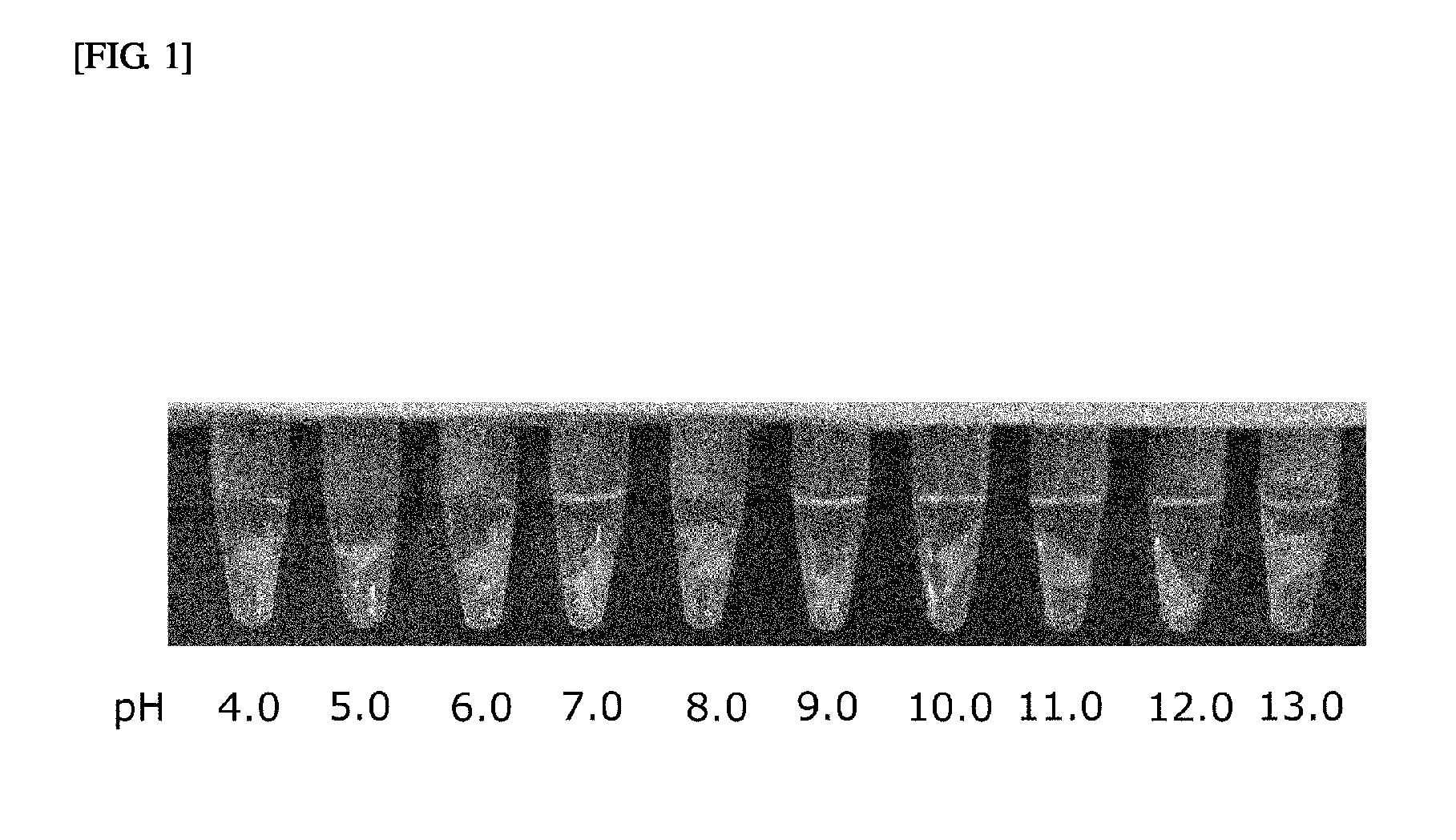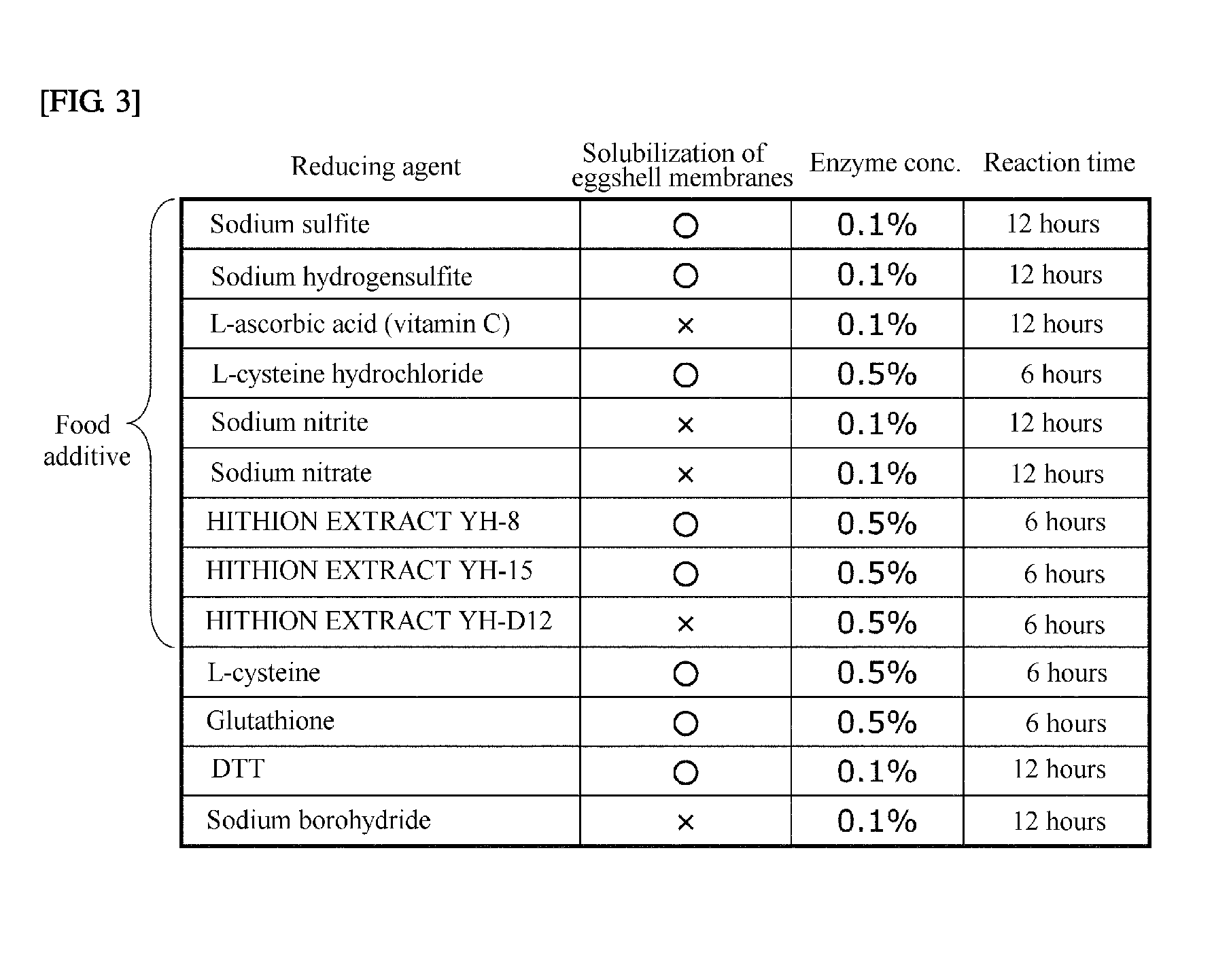Eggshell membrane solubilization method using enzymes
a solubilization method and enzyme technology, applied in the field of solubilizing eggshell membranes using enzymes, can solve the problems of large discharge of eggshell membranes, refractory membranes and thus difficult to handle, and no effective method for solubilizing eggshell membranes, etc., to achieve the effect of high utility value, high solubilization efficiency and sufficient solubility
- Summary
- Abstract
- Description
- Claims
- Application Information
AI Technical Summary
Benefits of technology
Problems solved by technology
Method used
Image
Examples
examples
[0128]1. Study of Eggshell Membrane Solubilization by Protease
[0129]Chicken eggs were broken and liquid eggs were taken out, and then the egg shells with eggshell membranes were immersed in a 4% by weight acetic acid aqueous solution for about 5 to 10 minutes, and the eggshell membranes were removed and collected by hand. The removed eggshell membranes were washed with water, and thoroughly dried before use.
[0130]Using the eggshell membranes as substrates, solubilization of the eggshell membranes was studied using existing enzyme preparations. Using 15 commercially available enzyme preparations (NEWLASE F3G, PROTEASE M, PROTEASE N, PROTEASE P3G, PROTEASE S, BROMELAIN F, PROLEATHER FG-F, peptidase R, UMAMIZYME G, THERMOASE Y100, PROTEAX, PROTEASE A, PAPAIN W40, PANCREATIN 8AP, and BIOSORK), reaction was carried out under various pH conditions (pH 4.0 to 13.0). The buffer solutions in the respective pH ranges are as follows. The conditions at pH 4.0 and 5.0 used a 100 mM NaOAc buffer,...
PUM
| Property | Measurement | Unit |
|---|---|---|
| Molar density | aaaaa | aaaaa |
| Molar density | aaaaa | aaaaa |
| Molar density | aaaaa | aaaaa |
Abstract
Description
Claims
Application Information
 Login to View More
Login to View More - R&D
- Intellectual Property
- Life Sciences
- Materials
- Tech Scout
- Unparalleled Data Quality
- Higher Quality Content
- 60% Fewer Hallucinations
Browse by: Latest US Patents, China's latest patents, Technical Efficacy Thesaurus, Application Domain, Technology Topic, Popular Technical Reports.
© 2025 PatSnap. All rights reserved.Legal|Privacy policy|Modern Slavery Act Transparency Statement|Sitemap|About US| Contact US: help@patsnap.com



